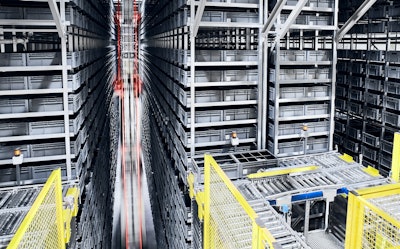
The supply chain industry grew during the Coronavirus disease (COVID-19) crisis and so did the need for faster operational processes and automation of human tasks. As part of it, the logistics sector is struggling to meet the growing consumer demands, high labor costs, regulatory measures and siloed data, whilst complying with a dynamic environment. Complexities woven in the industry are not just occasional, but tend to create a ripple effect across the infrastructure. Ultimately, the warehouse workforce strives to meet customers’ requirements by managing incoming orders through multiple layers, regardless of inventory processes.
To improve the last mile of logistics operations, companies started looking into micro-fulfillment. This hybrid model brings the inventory closer to consumers, encompassing traditional technology and automation with in-store picking. Micro-fulfillment ensures quicker product delivery to the end-users, involves efficient tech-based order picking, is easier to establish and reduces operational costs. Retailers are now adopting micro-fulfillment strategies for instant consumer gratification and improved product accessibility, as a competitive advantage.
Micro-fulfillment infrastructure relies on automation, and although hardware capabilities are highly relevant, the software is what determines the true value added to the whole process. Such a robust vision software enables the automated picking and stacking of random objects and ensures easy segmentation, classification and quality control, while suggesting the best way to pick any item varying in shape, size, color and position. This allows robots to handle closely stacked or overlapping items, as well as transparent or highly reflective objects. Just as the camera and gripper are the eyes and arms of a robot, the vision software is the brain that translates the image and directs the robot to move accordingly.
Since these are complex technologies in a very dynamic industry, it is essential for system integrators to look for a transparent long-term partnership with companies that empower them to understand the technologies used, rather than a one-time solution provider. This will allow them to remain flexible in a very fast-paced market, avoiding the hardware lock-ins of black-box solutions and ensuring they can always integrate the latest technologies in their systems. The path toward success for system integrators starts with recognizing their true challenges, considering alternative solutions to tackle them and employing the right tools to do so, all while making sure they remain self-reliant.
With trust as a driving factor of long-term success, ensure each client receives a robust solution with proven software architecture to facilitate the successful development, management and maintenance of installations. To stimulate system integrators’ independency, consider a holistic approach by reflecting on topics, such as:
• Does the vendor provide a high-quality software that escalates their logistics performance?
• Will they receive additional services, such as support and maintenance?
• How experienced, stable and specialized is the software provider in the global market?
• How do they manage software deployment processes?
Despite the pandemic, micro-fulfillment operations are maximizing the efficiency of the supply chain industry. The amplified need to incorporate automation technologies is urging companies to modify their logistics strategies for better supply chain management. Warehouse automation is crucial in responding to this growing market economy and having robust software is pivotal. System integrators must seek sustainable solutions that best align with their interests, can integrate seamlessly and meet end-users' expectations. Additionally, partnering up with a software provider with extensive experience in computer vision and software development can improve their overall performance.












![Pros To Know 2026 [color]](https://img.sdcexec.com/mindful/acbm/workspaces/default/uploads/2025/08/prostoknow-2026-color.mduFvhpgMk.png?ar=16%3A9&auto=format%2Ccompress&bg=fff&fill-color=fff&fit=fill&h=135&q=70&w=240)






